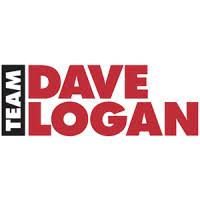 Hail Damage Repair & the Insurance Claims Process
Hail Damage Repair & the Insurance Claims Process
The insurance claims process for hail storm damage to your home can be very confusing. Most people assume their insurance agent is the expert but that’s usually not the case. Insurance agents are in the business of selling policies. They do not deal with claims and often don’t fully understand the process. The purpose of this article is to give you a plan to assess the damage to your home, determine if a claim is warranted and how to manage the hail damage repair process from beginning to end.
DIY Exterior Inspection
You usually can’t spot hail damage to your roof from the ground. But it’s not a good idea to climb a ladder and walk around on your roof after a storm either. Those are dangerous activities even in dry conditions. The fact is you don’t need to do that to get an idea of roof damage anyway. Look at your gutters and window frames for signs of dents or damage. Check out your siding and your car. If your siding has cracks or holes or your car has dents, then chances are you have hail damage to your roof.
Call a Roofer with Hail Damage Repair Experience.
Any reputable local roofer will do a free hail damage inspection of your roof and home exterior. It’s a good idea to start here because a local roofer will likely get to you in just a few days where an adjuster might take weeks. Also, you don’t want to file a claim unless you know you have damages. Filing a no damage claim can negatively affect your policy status with some insurance companies. Just make sure you do your due diligence on your roofer. A quick google search will usually do the trick.
Calling the Adjuster
If the roofing contractor determines that you have hail damage, you should contact your insurance company to start a claim. They will send an adjuster to perform an inspection. It is a good idea to have your roofer meet with the adjuster to discuss the damage. This will increase the likelihood that your claim will be approved.
For hail damage repair claims, the timing of the adjuster appointment is going to depend on how big the storm was and how soon after the storm you are calling. For a decent sized Colorado hailstorm, the adjuster appointment will likely be scheduled a few weeks out from the day you call. That period should be shortened once you get a few months past the storm.
The Insurance Scope
If your hail damage repair claim is approved, the insurance adjuster will issue a scope of damages. This usually takes about 1-2 weeks after the adjuster’s inspection. This is a document that lists the hail damage repairs the insurance company has agreed to pay for. Be aware that the initial insurance scope is often incomplete. This could be because it is based on incorrect assumptions, doesn’t include code requirements, or doesn’t have complete information.
For example, the scope may list the replacement cost of standard shingles, but the homeowner has impact resistant shingles. It is also possible that during the job it will be discovered that the roof has damaged wooden decking. The adjuster would not be able to determine this at the initial inspection. Finally, local building codes often require some additions or changes to the scope. Your insurance company relies on your contractor to document and report these changes.
Supplements
If the insurance scope is incorrect or incomplete in any way, your contractor will document the issues and contact your insurance adjuster. This is a normal part of the hail damage repair process and is usually not contentious. Adjusters expect the local contractor to include additional items that might be required by local building codes or additional discovered damage. Likewise, if additional hail damage is discovered, the contractor will document this with pictures and the adjuster will issue a revised insurance scope. Supplements will increase the value of your claim but will not increase your out-of-pocket expenses.
So, let’s assume the initial scope is for $20,000 and the contractor submits additional approved supplements totaling $8,000. The new claim value would be $28,000 and the insurance company would pay that additional $8,000. However, your only out of pocket cost would still just be your deductible.
Hail Damage Repair On-Site Work
If your insurance claim is just for roof and gutters it will likely be scheduled only a few weeks out. But, it might take a little longer for a really large storm. A new roof and gutter replacement will only take 2-3 days of work on most homes. If there are multiple trades involved (especially windows) this could lengthen the time for completion of the claim to around 6 months. Windows typically have to be special ordered and in a storm environment, suppliers are often delayed. Other things that could delay the work are manufacturer material shortages and the response time of your insurance company regarding supplement requests.
Project Completion and Final Payment
When your contractor has completed the onsite hail damage repairs, they will submit a final invoice or a certificate of completion to your insurance carrier. Then, the insurance carrier will then release any remaining funds to you rather than your contractor. You will then either endorse that check over to your contractor or cash it and issue a check to the contractor for that amount plus your deductible. For clarification, let’s say the total claim is $28,000 and you have a $2,000 deductible. In that case, the insurance company will pay you $26,000. You will add your deductible to that amount and pay your contractor the $28,000 replacement cost. In Colorado it is illegal for a contractor to pay, waive or rebate any portion of your deductible.
Colorado Superior Roofing has been performing hail and storm damage repairs in Colorsdo since 2002. We are A+ rated with the BBB and Preferred Roofers with Team Dave Logan. Check out our excellent online reviews.






